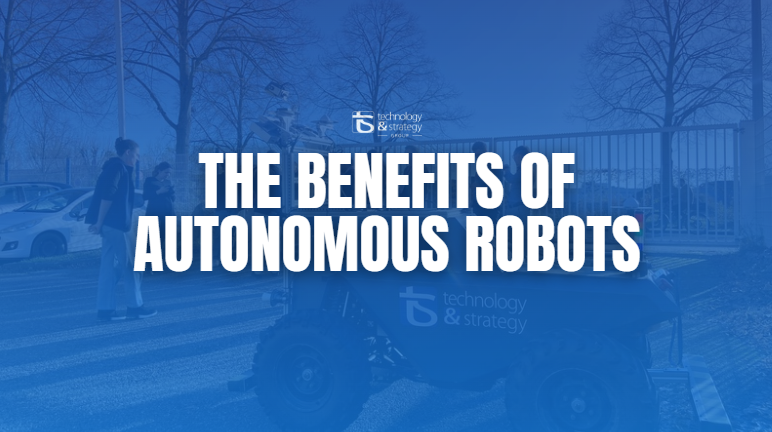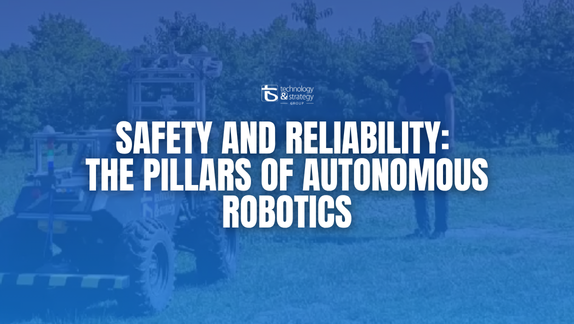Mechanical engineering has undergone a remarkable transformation over the past decade. Traditional design principles focusing solely on structural integrity, material strength, and kinematic behaviors now represent just one dimension of a much broader discipline.
The introduction of embedded sensors, actuators, and control systems has elevated mechanical components into intelligent systems capable of self-monitoring, adaptation, and optimization. This evolution is particularly evident in automotive powertrains, where mechanical engineers no longer design isolated components but rather integrated systems.
A modern vehicle transmission isn't simply a mechanical device—it's a smart system constantly adjusting to driver behavior, road conditions, and efficiency targets through real-time data processing. This integration exemplifies how embedded electronics transforms traditional mechanical systems.
Several technological and market forces are fundamentally reshaping mechanical engineering practice:
Perhaps the most significant transformation in mechanical engineering is the convergence of physical and digital domains. We now regularly implement digital twin technology—virtual replicas of physical assets—to monitor, analyze, and optimize mechanical systems throughout their lifecycle.
For a recent automotive client, we created a comprehensive digital twin of a cooling system for electric vehicle batteries. This virtual model allowed continuous monitoring of thermal performance, enabling predictive maintenance and optimization algorithms that extended battery life by 18%.
, Engineering Expert at T&S
Despite technological evolution, certain foundational principles remain essential in mechanical engineering. Force analysis, stress-strain relationships, dynamic systems behavior, and thermodynamics continue to form the bedrock of mechanical design.
However, these principles are now applied through advanced computational methods rather than manual calculations. When designing lightweight structural components for automotive applications, our engineers apply fundamental principles of mechanics but augment them with topology optimization algorithms.
This combination of classical engineering with computational power yields components that are often 30-40% lighter while maintaining required strength and stiffness. The approach demonstrates how smart product realization integrates traditional principles with modern tools.
Materials selection has evolved from simple lookup tables to sophisticated multi-parameter optimization. Modern mechanical engineers must navigate complex tradeoffs between mechanical properties, manufacturability, cost, weight, and environmental impact.
The exponential growth in advanced materials—from high-strength composites to self-healing polymers—requires systematic selection methodologies. Our materials selection framework integrates mechanical requirements with manufacturing constraints and lifecycle considerations.
Today's mechanical engineers increasingly adopt systems engineering approaches to manage complexity. Rather than designing components in isolation, we define interfaces, allocate requirements, and manage interactions between subsystems.
This methodology is essential when mechanical components must integrate with electronic and software elements to create cohesive systems. For ADAS components, our teams apply systems engineering to ensure that mechanical housings provide physical protection while optimizing sensor performance.
The housing design directly impacts sensor accuracy and reliability, demonstrating how mechanical engineering decisions cascade through integrated systems. This approach aligns with our safety engineering practices.
Computer-aided tools have transformed from simple drawing replacements to sophisticated design environments that integrate multiple physics domains. Modern CAE platforms enable engineers to simulate structural, thermal, fluid, electromagnetic, and acoustic behaviors simultaneously.
Multi-physics simulation has become essential for complex mechanical systems. When designing cooling systems for power electronics in automotive applications, we routinely model fluid flow, heat transfer, and structural mechanics simultaneously to optimize performance.
These simulations have reduced development time by 40% while increasing design confidence. The integration of simulation with smart validation processes ensures robust design verification.
Digital twins represent perhaps the most significant advancement in mechanical engineering practice. By creating virtual replicas of physical assets that update in real-time based on operational data, engineers can monitor performance throughout a product's lifecycle.
We recently implemented a digital twin for a critical automotive production line, integrating mechanical component health monitoring with process data. This system detected anomalies in mechanical wear patterns before they caused failures.
Artificial intelligence and machine learning have revolutionized mechanical design optimization. Generative design algorithms can now propose non-intuitive solutions that outperform human-created designs for specific criteria like weight reduction or thermal management.
In a recent project for lightweight structural components, our AI-powered optimization process explored thousands of design variations against multiple constraints, ultimately delivering a solution 22% lighter than conventional designs while maintaining equivalent strength.
, Technical Expert at T&S
Mechatronics—the synergistic integration of mechanical, electronic, and control systems—has evolved from a specialized subdiscipline to a fundamental approach in modern mechanical engineering. This integration enables mechanical systems to sense their environment and adapt their behavior accordingly.
For automotive steering systems, we've implemented mechatronic designs that continuously adjust assistance levels based on vehicle speed, driver inputs, and road conditions. These systems integrate torque sensors, electric motors, and sophisticated control algorithms with traditional mechanical linkages.
The seamless integration creates improved driver experience while enhancing efficiency and safety. This approach leverages our expertise in hardware-software integration.
Embedded systems have transformed mechanical components into intelligent devices capable of autonomous operation, self-diagnosis, and network communication. Microcontrollers integrated directly into mechanical assemblies enable local processing that enhances functionality.
One example is our development of smart valve actuators for thermal management systems. These mechatronic devices incorporate position sensing, temperature monitoring, and communication capabilities directly into the mechanical assembly.
This integration enables precise flow control based on real-time system needs rather than predetermined settings, improving overall system efficiency by 15-20%. The design exemplifies how embedded electronic engineering enhances mechanical functionality.
Internet of Things (IoT) connectivity has extended mechanical engineering beyond physical boundaries, creating systems that communicate, collaborate, and collectively optimize performance. Connected mechanical components can share operational data and integrate with broader digital ecosystems.
We recently designed a connected suspension system for commercial vehicles that continuously adjusts damping characteristics based not only on immediate road conditions but also on predictive data from other vehicles in the fleet.
This system demonstrates how mechanical engineering now encompasses networked intelligence and collaborative optimization, leveraging the principles of Industry 4.0 connectivity.
Electric vehicle powertrains present unique mechanical engineering challenges that differ fundamentally from internal combustion engines. Managing power density, thermal conditions, and NVH characteristics requires innovative mechanical solutions.
Our team developed a novel cooling system for high-performance electric motors that integrates the cooling channels directly into the stator housing, achieving 30% better thermal management than conventional designs.
This approach exemplifies how mechanical engineering for EVs requires rethinking traditional approaches to address specific requirements of electrified powertrains. The thermal management challenges align with broader innovation initiatives in sustainable mobility.
Advanced Driver Assistance Systems and autonomous vehicle technologies depend critically on robust mechanical engineering to ensure sensor functionality, calibration stability, and system reliability.
Mechanical design must accommodate precise sensor positioning, protect sensitive electronics, and maintain alignment under diverse environmental conditions. For a Level 3 autonomous system, we engineered a multi-sensor integration platform that maintains precise alignment between LiDAR, radar, and camera systems.
Testing methodologies for mechanical components have evolved to address increasingly complex requirements and interactions. Beyond traditional strength and durability testing, modern validation approaches must account for system interactions and software dependencies.
Our hardware-in-the-loop (HIL) testing facility combines physical mechanical components with simulated electronic and software environments to validate complete system performance. For brake-by-wire systems, this approach enables comprehensive testing under thousands of simulated scenarios.
This methodology identifies potential issues that traditional component-level testing would miss, demonstrating the value of integrated validation approaches.
Aerospace applications demand exceptional strength-to-weight ratios that push the boundaries of materials science and structural design. Advanced composites, metal matrix materials, and optimized geometries enable structures impossible with conventional approaches.
We transferred our expertise in composite structure design from aerospace to automotive applications, helping a premium manufacturer reduce chassis component weight by 35% while maintaining crash performance.
This cross-sector knowledge transfer demonstrates how advanced mechanical engineering principles create value across industries, leveraging our multidisciplinary expertise.
Thermal challenges in aerospace and energy applications often involve extreme operating conditions, tight space constraints, and high reliability requirements. Innovative heat transfer solutions can significantly improve system efficiency and longevity.
For a hydrogen fuel cell system, our engineers developed a bipolar plate design with integrated cooling channels that improved thermal uniformity by 40% while reducing pressure drop. This mechanical engineering innovation directly enhanced system efficiency by eliminating localized hot spots.
Critical systems in aerospace and energy applications require exceptional reliability under adverse conditions. Mechanical engineering for these applications emphasizes redundancy, failure mode analysis, and design margins appropriate to consequence severity.
Using probabilistic design methods, we developed a reliability-centered approach for mechanical components in safety-critical systems that quantifies uncertainty and optimizes design margins based on failure consequences.
This methodology has been successfully applied to both aerospace control surfaces and critical energy infrastructure components, demonstrating the value of systematic safety engineering approaches.
Sustainability considerations have become integral to mechanical engineering practice. Life cycle assessment (LCA) methodology enables engineers to quantify environmental impacts from raw material extraction through manufacturing, use, and end-of-life disposal.
Our eco-design approach integrates LCA directly into the design process, enabling informed decisions about materials, manufacturing processes, and design alternatives. For automotive components, this methodology has identified opportunities to reduce lifetime carbon footprint by 30-40%.
This approach aligns with our broader sustainability commitments and demonstrates how mechanical engineering contributes to environmental objectives.
Energy efficiency represents both an environmental imperative and an economic opportunity. Mechanical systems optimized for efficiency can significantly reduce operational costs and environmental impact throughout product lifecycle.
For industrial equipment, we've implemented advanced efficiency optimization that combines mechanical redesign with intelligent control systems. One project reduced energy consumption by 28% by optimizing component interactions and implementing variable operation based on actual demand.
Circular economy principles—designing for reuse, remanufacturing, and recycling—are transforming mechanical engineering practices. Design decisions now consider end-of-life scenarios as fundamental requirements rather than afterthoughts.
We've developed design-for-disassembly guidelines that enable efficient separation of materials at end-of-life while maintaining structural integrity during operation. These principles, applied to automotive subsystems, have increased material recovery rates from 40% to over 85%.
The approach demonstrates how mechanical engineering can contribute to circular economy objectives while maintaining performance requirements.
Additive manufacturing has progressed from prototyping technology to production methodology, enabling geometries and material combinations impossible with traditional manufacturing. This capability is revolutionizing mechanical design approaches.
Our engineers have leveraged additive manufacturing to create optimized cooling channels in injection molds that follow the part contour perfectly—a design impossible with conventional drilling. This approach reduced cycle time by 25% while improving part quality.
The example demonstrates how advanced manufacturing enables new mechanical design paradigms, connecting with our smart factory initiatives.
Biomimicry—drawing inspiration from natural systems—offers powerful approaches to mechanical engineering challenges. Combined with smart materials that can change properties in response to stimuli, these approaches enable adaptive mechanical systems.
We've implemented biomimetic principles in fluid control systems, creating valve designs inspired by heart valves that provide superior flow characteristics with fewer moving parts. These designs, combined with shape memory alloys for actuation, create self-regulating systems.
The approach exemplifies how nature-inspired solutions can address complex mechanical engineering challenges while reducing system complexity.
Artificial intelligence is transforming mechanical design from a primarily human-driven process to a collaborative human-AI partnership. Generative design algorithms can explore solution spaces far broader than human designers could consider.
Our implementation of generative design for structural brackets yielded components 35% lighter than conventional designs while exceeding strength requirements. The AI-generated geometries, impossible to conceive through traditional design approaches, demonstrate computational methods' transformational impact.
This evolution connects with our broader innovation strategy and positions mechanical engineering at the forefront of AI-enabled design.
As mechanical systems become more intelligent and autonomous, human-machine interface design becomes increasingly critical. Mechanical engineers must now consider how users will interact with, understand, and trust their systems.
For advanced driver assistance systems, we've developed haptic feedback mechanisms that communicate system status and intentions through the steering wheel and pedals. These mechanical interfaces create intuitive communication channels between automated systems and human operators.
The approach improves both user experience and safety, demonstrating how mechanical engineering must evolve to support human-centered design in autonomous systems.



Discover how autonomous robots developed at Englab’s R&D Center can positively impact the environment and economy through advanced and sustainable technologies.
READ MORE
Discover how Englab's R&D Center ensures the safety and reliability of autonomous robots through advanced technologies and strict protocols.
READ MORE
Discover how Englab develops a Model Predictive Controller (MPC) enabling autonomous off-road vehicles to navigate safely in complex, unstructured terrains.
READ MORE